Interdisciplinary education fair engages health sciences students in collaborative, hands-on learning
Staff Reports |
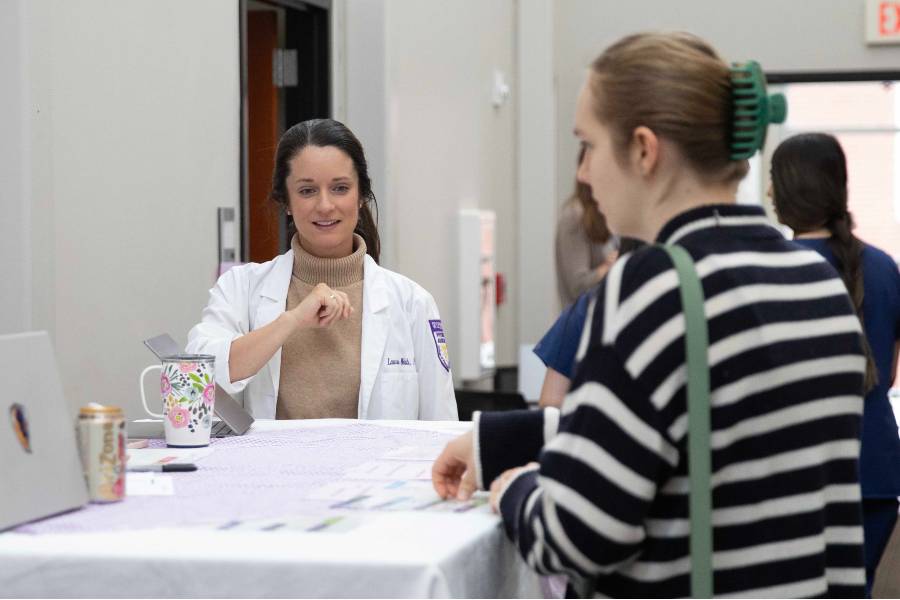
Students and faculty from Lipscomb University’s College of Health Sciences and the Department of Social Work and Sociology in the College of Liberal Arts & Sciences gathered on April 4 in the Hughes Center for a hands-on interdisciplinary education fair designed to cultivate collaboration and holistic patient care. The event, which drew participation from approximately 100 students and faculty, featured immersive activities led by faculty from several departments and schools.
From clinical simulations to interactive case studies, the event offered three primary stations through which students rotated, each designed to challenge their assumptions, foster cross-disciplinary dialogue and prepare them for team-based care in real-world settings.
“This day was designed to foster understanding of each profession’s unique competencies and to promote interdisciplinary collaboration among students across Lipscomb’s health programs,” said Amy Draper, assistant professor of dietetics. “Providing students with a structured, supportive environment to engage in collaborative practice is essential for preparing them to succeed in complex clinical settings. Based on the feedback received, we believe this goal was successfully achieved and look forward to building on this foundation in the future.”
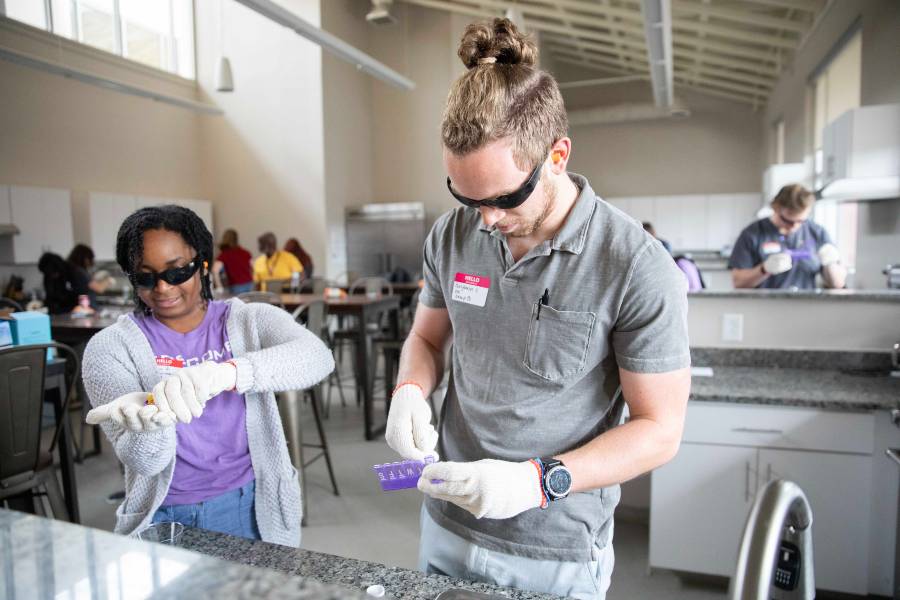
Students stepped into the shoes of aging patients through a dementia and aging simulation.
Collaborative care in action
At the nutrition station, students were invited to consider the role of artificial intelligence in clinical decision-making. Beginning with a thought-provoking question — “Would you trust an AI-generated meal plan, discharge plan, exercise plan or medication adjustment?” — students were then given a patient case scenario and tasked with developing a human-created discharge plan. Their plans were compared with one generated by AI, and the question was posed again to evaluate shifts in their comfort levels with emerging technology.
At the social work station, students stepped into the shoes of aging patients through a dementia and aging simulation led by Autumn Maxwell, assistant professor and coordinator of field education in the Department of Social Work and Sociology. Wearing gear that mimicked conditions such as hearing loss, visual impairment and limited mobility, students attempted everyday tasks like medication management and basic household chores — an eye-opening experience that highlighted the lived challenges many older adults face.
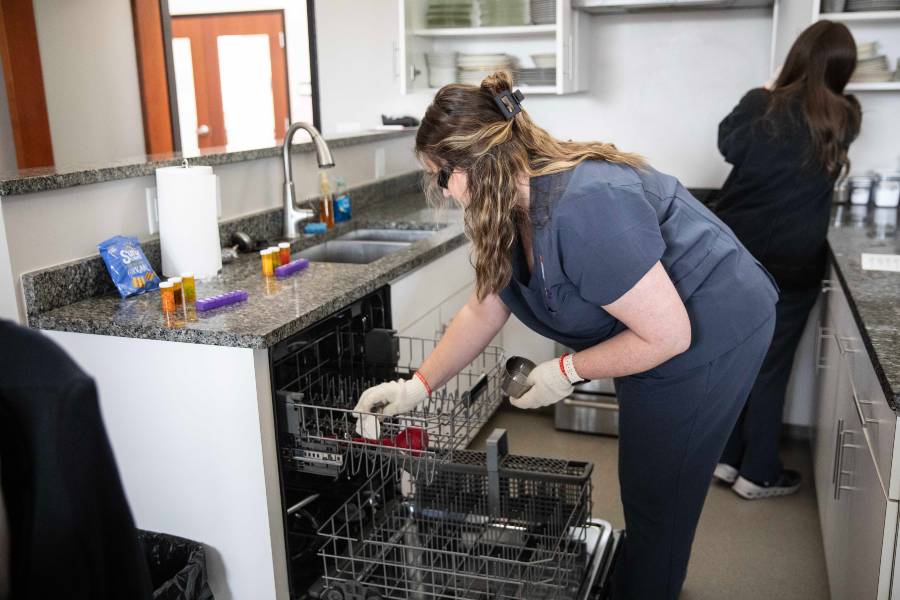
Students stepped into the shoes of aging patients through a dementia and aging simulation.
“The activity that stood out to me the most was the dementia and aging simulation,” said Julia Shepherd, a first-year physician assistant studies student. “It reinforced my perspective on interprofessional collaboration because it demonstrated how difficult it can be for the elderly to perform ADLs (activities of daily living). As a provider, this is not always at the forefront of my mind, but hearing the insights from the social work students was incredibly helpful.”
Social work students also found the collaborative nature of the experience meaningful.
“This experience was impactful because I was able to see first-hand the collaboration required to successfully and holistically care for patients,” said Julia Rossmiller, a senior social work major. “Each discipline brings their own training, theories, and processes of intervention to the table and each is valuable in its own way.”
“Although my social work outlook was significantly different than that of the PA and kinesiology students, they were clearly experts in their field, looking from a strong medical or exercise point of view that I personally did not have knowledge on,” added Sarabeth Robinson, also a senior social work major. “Hearing their perspectives before offering my input allowed me to build upon the case from a social work perspective. It was very helpful for me to know what the major concerns were so I knew what was most important for me to focus on.”
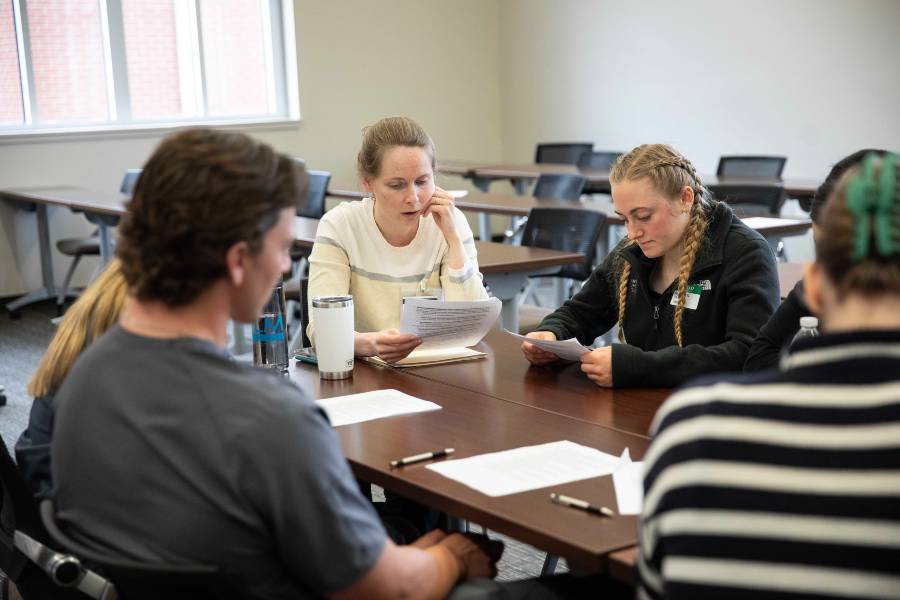
Another senior social work student shared, “I was impressed by their knowledge, and also impressed by their willingness to hear what I as the social worker had to say to add to what they had already discussed. I found my teammates open to learning and they asked me questions about my role when they were not sure what my scope of practice was.”
The physician assistant studies station engaged students in analyzing a clinical vignette involving a patient with chronic heart failure. Led by the School of Physician Assistant Studies’ Abbey Wu, assistant professor, and Lizzie Monroe, principal faculty, students worked together in roundtable discussions to develop discharge plans that addressed not only the patient's medical and physical needs but also psychological and social considerations.
“The interdisciplinary education fair was a success in demonstrating the importance of collaborative care among healthcare professionals,” Wu said. “It highlighted how each discipline brings unique strengths to patient care, ultimately improving outcomes through teamwork.”
In addition to the core stations, students also visited the university’s DEXA and kinesiology labs to further explore tools and assessments used in clinical and research settings.

A full picture of the patient
The fair provided students with a rare opportunity to learn from and alongside peers in other disciplines — a central goal of interprofessional education.
“I think it is so imperative to have experiences like these because it allows each specialty to look outside of the myopic viewpoint of their specialization and see a fuller picture of a patient,” said Matthew Cowley, a first-year physician assistant studies student.
For many, the event highlighted the critical importance of understanding the broader context in which a patient lives.
“I gained valuable insight from the social work and dietetics students that I can apply to my future practice,” said Garrett Drew, also a first-year physician assistant studies student. “From the social work perspective, I was reminded how crucial it is to assess social determinants of health — like access to transportation, financial stability, and home support. These perspectives reminded me to look beyond the clinical diagnosis and consider the whole patient.”
“This was my first experience interacting with other teams,” added Addie Lake, a Master of Science in Dietetic Internship student. “My biggest takeaway was how everyone had something to add to the conversation. It really highlighted the importance of all of our specialties.”
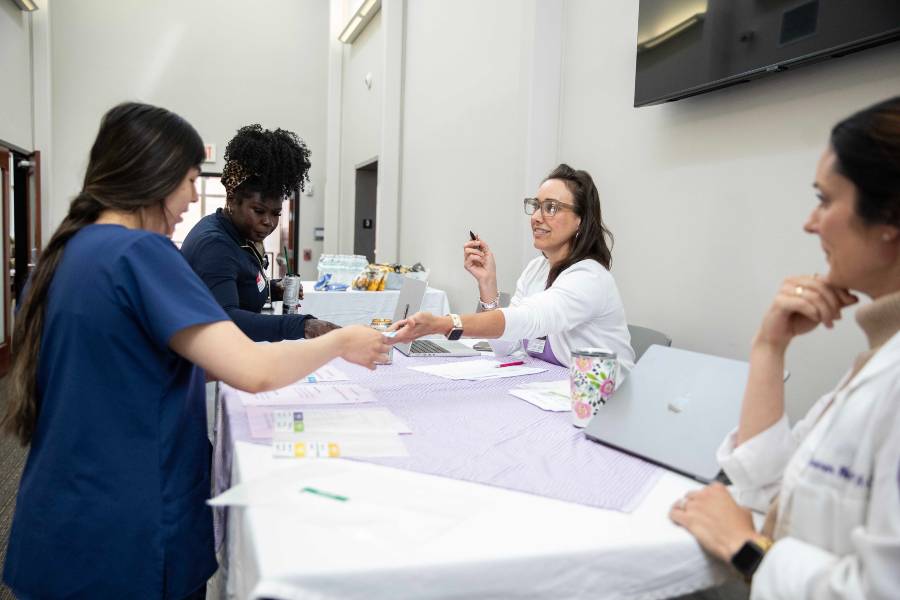
A strategic priority for health sciences
According to Lynette Austin, dean of the College of Health Sciences, interdisciplinary training is a strategic priority — and a necessity — for preparing students for the demands of today’s healthcare environments.
“The IPE Fair allowed participating faculty and students to rotate among three experiences to practice working with individuals from other healthcare backgrounds,” said Austin. “Interprofessional training is a vital function of each department in the College of Health Sciences. Learning to work effectively in a team of different healthcare professionals, no matter the setting, is essential for health sciences students, as this is exactly what they will be called to do once employed.”
She noted that the fair was organized by the college’s Interprofessional Education (IPE) Committee and involved faculty from the departments of nutrition and dietetics, social work, physician assistant studies, nursing and pre-PT/OT, with contributions from both undergraduate and graduate programs.
“By collaborating across these disciplines, students gained a deeper understanding of the holistic nature of patient care and the vital role each professional plays in improving the patient experience,” added Wu. “The activity not only fostered a sense of teamwork but also emphasized that effective care involves the combined strengths of various healthcare providers.”